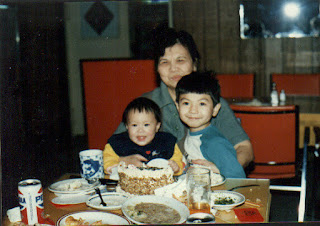Hello everyone, this week on
Tamgood, I will be answering your questions.
In my cooking classes I am often asked questions by my students about
different things about cooking. I
thought I would have some Q&A entries here with any cooking questions you
might have. Here are some questions I
have received so far.
Q: Are you better to chill
tortilla/pizza/dumplings /etc dough, or use it right away at room temp?
A: It all depends on what kind of
dough, for example pizza and touton dough you can use right away as chilling
will stiffen up the dough. You can chill
pizza or touton dough, but it doesn’t make that much of a difference. Butter based dough, like sugar cookie dough
or short bread is best chilled because it solidifies the butter, making the
dough more malleable and easy to work with, holding its shape during the baking
process.
Q: How about eggs? Some recipes say to use eggs at room
temperature, what is the difference between refrigerated and room temperature
eggs?
A:
Some recipes, especially baking recipes call for “room temperature
eggs”. This is most often accompanied
with “butter, softened”. We know that
softened butter blends better into a batter or dough than cold, hard butter,
and room temperature eggs are also more easily blended in than cold eggs. Cold eggs also may bring down the temperature
of the butter, hardening bits of it and making the dough or batter uneven.
Q: When I try to make
rice noodle dishes, the noodles break up in tiny bits. Why is this and how do I keep this from
happening?
A:
This is happening because the noodles are overcooked. Rice noodles are made from rice flour and are
very easily broken down in water. To
remedy this, when you boil the noodles, only put them in long enough to break
apart from the bulk and soften a bit.
Then you rinse off the excess starch by running the noodles under cold
water in a strainer and leave to dry out a bit.
The longer you dry the noodles out, the less they will break.
Q: What is the difference between baking powder
and baking soda and can you substitute one for the other?
A:
Baking soda and baking powder are both leavening agents designed to help
a baking product rise. Baking soda is
pure sodium bicarbonate, while baking powder is a mixture of sodium
bicarbonate, cream of tartar and starch.
The cream of tartar is an acidifying agent which neutralizes the basic
sodium bicarbonate, while the starch is a drying agent that forms a web to
create suspension and lift in the baked good during the baking process. You can substitute baking powder for baking
soda in a recipe, but you can NOT substitute baking soda for baking powder due
to ph, texture and taste.
A:
The ratio is 3:1:1 for oil to sugar to vinegar. One of my favorite simple vinaigrettes is
honey balsamic vinaigrette which is 3 parts olive oil to one part balsamic
vinegar and honey.
If you have any cooking questions, please don’t hesitate to
contact me through this page or at ftam@hotmail.com
. I should respond to you within a few
days and will use your question and answer in s future blog entry. Cheers!







